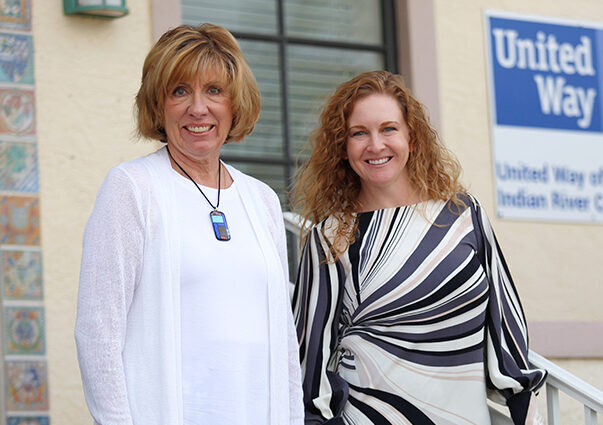
Gladys LaForge, Indian River Impact 100 president, hosted a virtual roundtable discussion last Wednesday on ‘The Need is Now’ during which Meredith Egan, CEO of United Way of Indian River County, highlighted critical areas of need, and Mary Blair, chair of the Impact Grants Committee, stressed the importance of additional members to meet the increased demand for grants.
“Today we need you all more than ever,” said event sponsor Robin Lloyd of Robin Lloyd & Associates, PA, at the start of the roundtable.
It was a sentiment later echoed by Blair, who said the number of applications for 2021 grants was double that of the previous two years, adding, “I look at that as an opportunity to double our impact on the community.”
Egan spoke about the 2019 Community Needs Assessment, a 12-month project that ran from the spring of 2019 to the spring of 2020. The data collected, all pre-COVID, identified critical needs in the areas of children, economic opportunity and employment, health, housing and seniors.
“The research provides the backstory as to why the COVID-19 crisis is having such a devastating economic impact,” said Egan.
The Needs Assessment shows that the income gap here, already the 10th highest in the country, is increasing. She pointed out that in Indian River County, the average annual income for the 1 percent is $2.9 million, as opposed to $43,373 for the remaining 99 percent.
“Low-wage jobs dominate the employment landscape in Indian River County,” said Egan, noting that half of all jobs pay less than $13.60 per hour. “Today, an individual needs to work 83 hours per week at a minimum wage job ($8.46/hour) in order to afford a fair-market-value, two-bedroom apartment in Indian River County.”
The cost of living in the county is $63,145 for a family of four, making it easy to see why 50 percent of households are living at the draconian federal poverty level ($26,200 in 2020 for a family of four) or one paycheck away.
The United Way has identified hard-working residents living above the poverty level, but struggling paycheck to paycheck, as the ALICE (Asset Limited, Income Constrained, Employed) population. With little or no savings, Egan said they live daily on the brink of disaster, and have been particularly hard hit by the pandemic.
Persistent challenges such as a lack of safe and affordable housing, quality pre- and afterschool care, and medical, dental and mental health care have been exacerbated by the pandemic.
“Indian River County is very fortunate to have both small and large donors that are very generous with their time and financial support,” said Egan. “As we wade through the recovery efforts, we must keep generosity at the forefront as a targeted approach to address many of the inequalities identified in the Needs Assessment, and also take into consideration some of the lessons learned in the COVID experience.”
Blair is coordinating the efforts of 52 panel members in eight teams who are reviewing applications and making site visits. There is also a rigorous financial review undertaken by eminently qualified Impact members.
Of the nonprofits, Blair said that 37 percent had previously received $100,000 Impact grants and 21 percent had received merit grants. The rest had either never been a finalist or were new to Impact.
While some questioned whether previous recipients should be considered, Blair explained, “I look at it as a wonderful indication. The continuity of relationships with our nonprofits, I think, is more impactful in general in Indian River County.”
Without identifying any nonprofits, she mentioned a few of the grant projects they are reviewing: an all-inclusive access to care program for low-income families; a mobile medical unit; a pre-school booster program; and an afterschool vocational training program for low-income youth.
Blair said her consistent message to the panel was to look for sustainable high-impact projects, meaning programs that have the potential to ripple out through the entire community.
To anyone thinking of joining or renewing their membership in Impact 100, Blair reiterated that the need is greater than ever.
“As I mentioned before, we have double the amount of grants this year than we have received in previous years,” said Blair. Additionally, she noted that nonprofits are operating with less money in their coffers as the pandemic has caused them to cancel their fundraisers.
The Impact model calls for “One Woman, $1,000, One Vote,” meaning the number of members determines the number of $100,000 grants that can be distributed. Over its 12-year history, Impact 100 has provided almost $6.7 million in grants to local nonprofits.
“I would love to be able to know, come April, that there’s enough money in the bank that we might give out at least four or maybe five grants to these deserving organizations,” said Blair.
“I would hope that all of you would consider joining Impact 100,” said LaForge in closing. “We are in a unique position to fund $100,000 grants and to make a difference.”
For more information, visit impact100ir.com.



